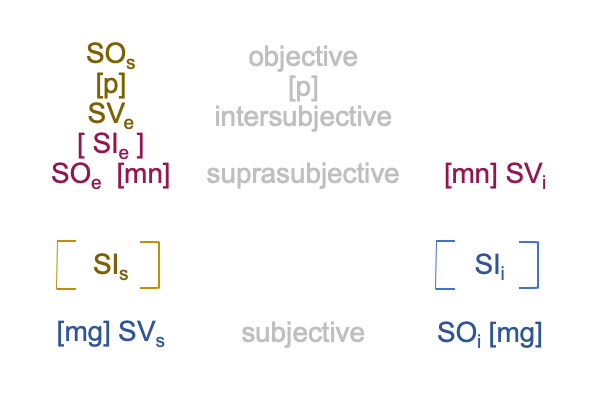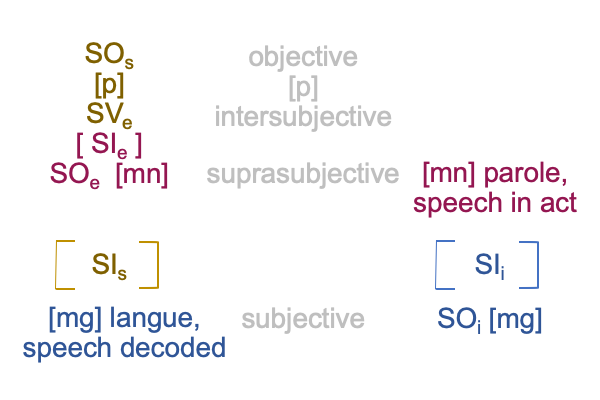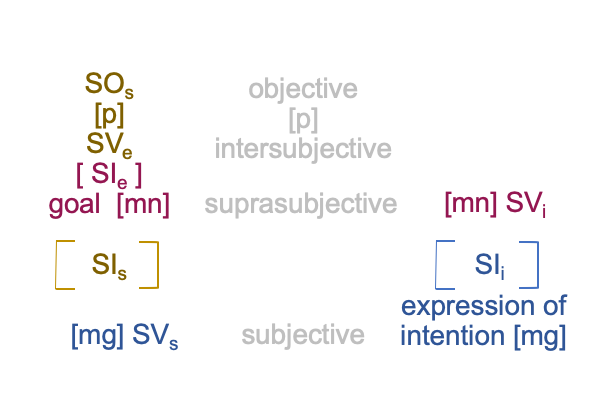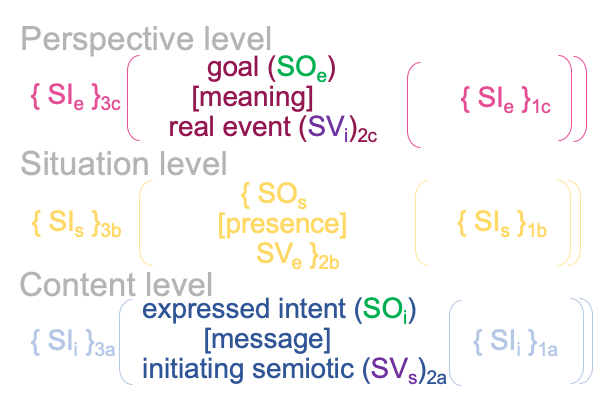Looking at Alexander Kravchenko’s chapter (2024) “A Constructivist Approach…” (Part 5 of 6)
1041 Epistemic?
Or empirio-schematic?
Where does the epistemic cut go?
Does empirio-schematics care?
1042 We can observe and measure the sign-vehicles and sign-objects in the following figure, once we have the following figure as a diagram of the thing itself.

Then, we can formulate models to account for the sign-interpretants.
1043 On one hand, the inquirer may treat the biosemiotic noumenal overlay as operational, consisting of three sign-relations, which constitute a spiral of semiosis through time.
On the other hand, the inquirer may regard each biosemiotic spiral phenomenologically, that is, as what the noumenon must be.
1044 With this in mind, I may look at one of the real elements that goes with [meaning], SVi, along with its counterpoint, SVs.
Parole2c (SVi) and langue2a (SVs) are worth considering.

Parole2c (SVi) is a vocal expression2c (SVi) that stands for the expression of an intention2a (SOi) in regards to a content-level normal context3a and potential1a (SIi). Like the actions of an animal, parole (SVi) is a real event that generates a sign-object (SOi) that signifies like an icon, a picture that sends a message.
Parole2c (SVi) is a real event that belongs to the interventional sign-relation. It’s counterpart, langue2a (SVs) initiates semiotic agency.
1045 Amazingly, over a century ago, Ferdinand de Saussure transforms the discipline of linguistics by proposing that spoken language consists of two arbitrarily related systems of differences, parole (SVi) and langue (SVs).
Here is one way to consider the proposition.
Parole, SVi, as an actuality2c on the perspective level, has a counterpart, langue, SVs, serving as an actuality2a on the content level. SVi belongs to the interventional sign. SVs belongs to semiotic agency.
1046 With that consideration in mind, suprasubjective parole2c, SVi, can be observed by a disinterested observer, and subjective langue, SVs, cannot. But, does that invalidate the claim that SVs is phenomena? No, langue2a, SVs, initiates the specifying sign-relation. That is phenomenal.
Here, I add a caveat. There is more than one way to portray parole and langue using diagrams of triadic structures. Just saying….
1047 Nonetheless, in a complementary fashion, I may look at the other real element that goes with [meaning], SOe, along with its counterpart SOi. Goal2c connects to [meaning]. Expression of intention2a associates to [message].

1048 This suprasubjective-subjective pair seems even more evolutionarily ancient than parole and langue. The goal2c, SOe, terminates semiotic agency. An expression of intention2a or the expression intended2a, SOi, satisfies the interventional sign-relation and activates a [message]. The goal2c (SOe) belongs to the Innerwelt. The intended expression2a (SOi) belongs to the Umwelt (and for humans, the Lebenswelt).
Indeed, may I suggest that SOi is what a disinterested observer would objectify if he were not on the subjective level?

